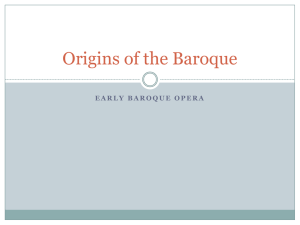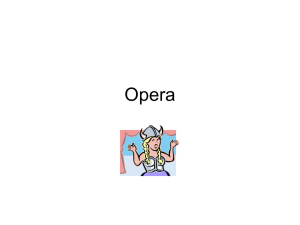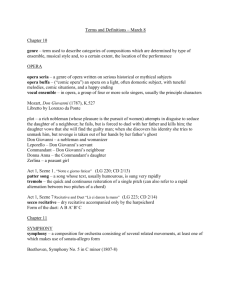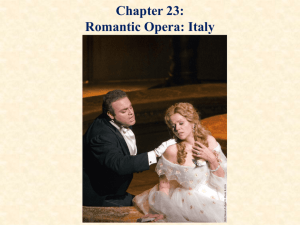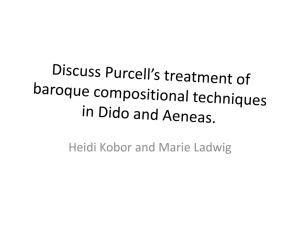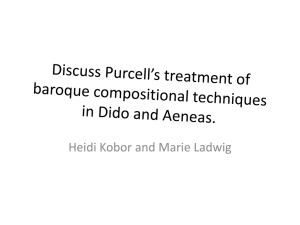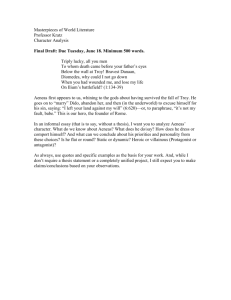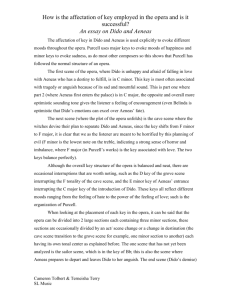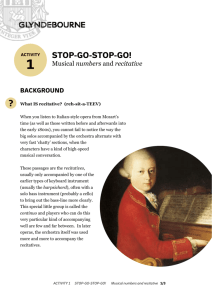French, English Opera PPT
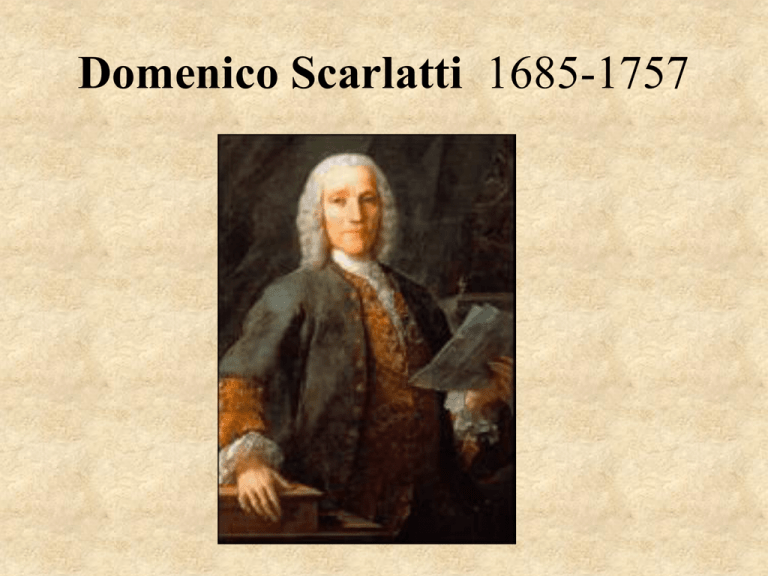
Domenico Scarlatti 1685-1757
Alessandro Scarlatti 1660-1725
Da capo aria
• A and B sections • A section then repeated (“da capo” means literally “from the head”) • Performers expected to improvise variations and ornaments during the repeated A section
Queen Anne of Austria Cardinal Mazarin
Louis XIV
The Palace at Versailles
• Versailles – Landscaping • Hall of Mirrors – Extravagance
Pierre Perrin
Jean-Baptiste Lully
Opera in France
• Tragedie lyrique: combo of dance scenes, lyrical music and plot based upon courtly love.
• Jean Bapiste Lully (1632-1687) father of French opera
French Overture
• Overture is French for “opening” 2 sections, each repeated 1. First section homophonic, dotted rhythm, majestic (was supposed to signal the entry of the king) and slower 2. Second section polyphonic, faster
How evil is opera?
a French critic, late 1600s: Opera is a bizarre affair made up of poetry and music, in which the poet and the musician, each equally obstructed by the other, give themselves no end of trouble to produce a wretched work.
How evil is opera?
Opera was illegal in Rome in the early 1700s.
an English critic, 1872: Opera is to be regarded “musically, philosophically, and ethically, as an almost unmixed evil.”
Opera in England
• James I (r. 1603-25) • Charles I (1625-490 – Stuart Kings – Supported musical plays called “masques” to be performed in private palaces.
– Very popular during this period of time.
Commonwealth Period
• 1649-60 • Ruled by the Puritans • Opera, Stage Plays, Secular forms of entertainment were forbidden.
• Considered blasphemous • Plays set to music could be performed if set with the proper precautions.
• John Blow is the first English masque writer.
• His pupil, Henry Purcell (1659) was the first major English Opera Composer.
Henry Purcell 1659-1695
Dido and Aeneas (1689)
• Dido, filled with grief meets her death. (loss of love) • Climbs a funeral pyre.
• Music: descending line in ground bass is a sign of grief in baroque music.
• Descending line paints “laid in earth.” • Use of ground bass.
• Use of dotted rhythms to denote royalty.
Dido and Aeneas, Act III Dido’s Lament
• Virgil’s Aeneid • Adventures of Aeneas after the fall of Troy • Aeneas is stranded in Carthage, Northern African coast • Falls in love with Dido, Queen of Carthage • Aeneas pushes her away as he must leave for Italy…. Soon to be the founder of Rome.
After Dido . . .
• English preferred spoken drama • Purcell wrote some “Semi-operas” – Example: The Fairy Queen (1692) • Opera had support of the monarchy in France and the public in Italy, but from neither in England
Types of Recitative
• arioso – passages that lie somewhere between recitative and aria style • recitative semplice (simple recitative) – as speechlike as possible and accompanied only by basso continuo • recitative accompagnato (accompanied recitative) – used orchestra to dramatize tense situations
